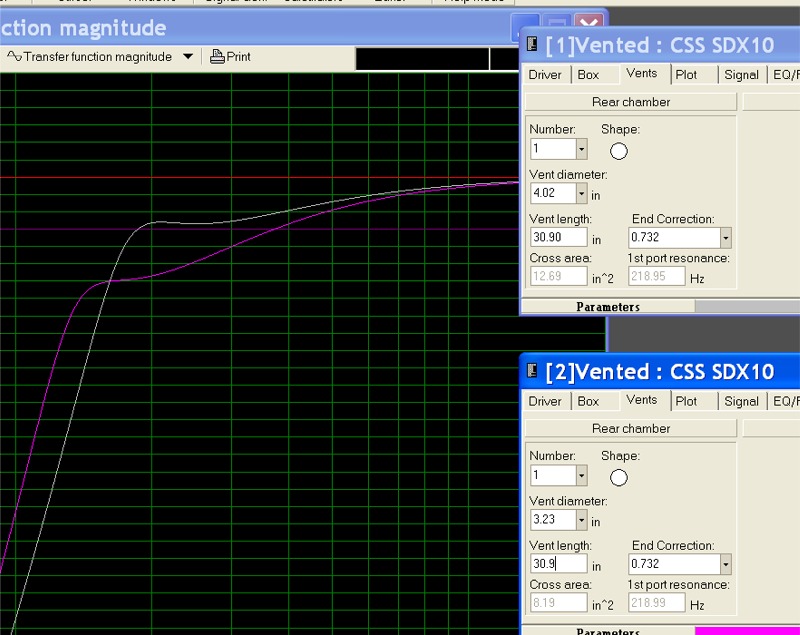Let's do some math!
I found the following port-tuning formula on
this page.

where
Lv is the length of your port in inches,
R is the inside radius of your vent tube,
Fb is the desired tuning frequency of your enclosure in Hertz,
Vb is the internal volume of your enclosure in cubic inches.
Solving the formula for
Fb gives us

If the original sub design has two ports, plugging one port will only change one variable, R, effectively halving it. In this formula, you have an R^2 in the numerator and an R in the denominator. Without actually running the numbers, this relationship between the Rs should be enough to show you that halving the value of R will reduce the value of
Fb, the desired tuning frequency.



